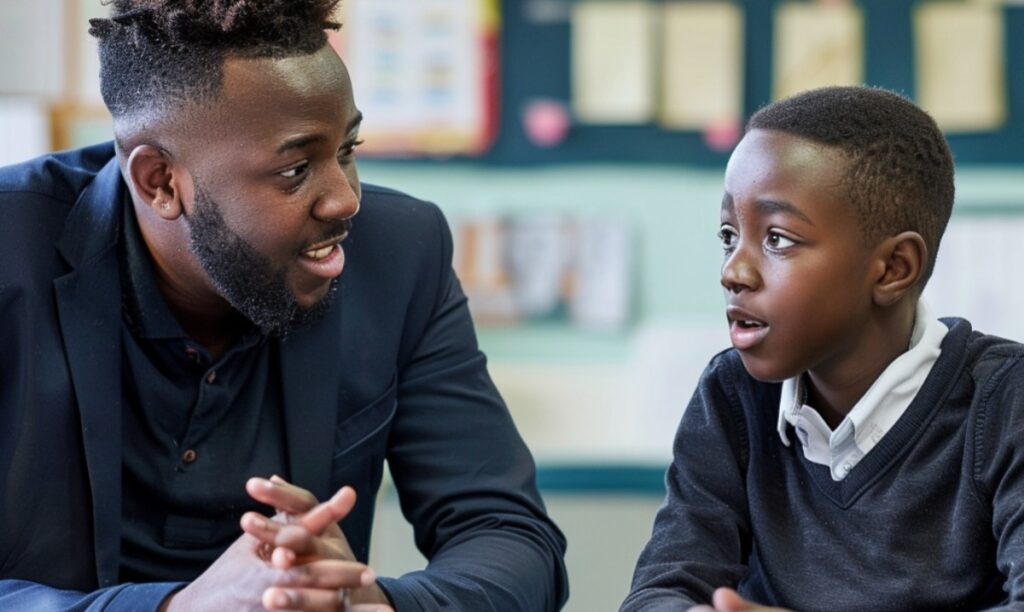Starting a new school year can give different teachers different feelings, such as, “Let’s do this!”; “You can do this.”; or “Here we go again.” Whichever emotions you must have felt, it is important you approach the new school year with as much preparation as possible. As the saying goes, “If you fail to plan, you plan to fail.”
Hopefully, you get to read this before or as the school year begins, but if not, don’t worry. Better late than never. I’ll share a few tips that will serve as a road map to help you start the year right and guide you throughout the year. Feel free to revisit this post as many times as you need—every month, every term, or even every week; whatever works for you.
9 Ways Teachers Can Start the Year Right
Prioritise Organisation
An organised classroom is the foundation of an effective learning space. Begin by ensuring that resources, from textbooks to teaching aids, are neatly arranged and easily accessible. A well-structured environment reduces distractions, allowing you and your students to focus on learning.

Moreover, planning—whether it’s your lesson plans or grading schedule—helps you manage your time efficiently. This minimises stress and sets a professional tone, demonstrating to your students that you value their time.
Build Routines
Routines bring stability to the classroom. Start the year by introducing daily or weekly structures that guide your students through each activity. These routines can include everything from how to enter the classroom to how assignments are submitted.
When routines are clear and consistently followed, students know what to expect, which helps minimise behavioural issues. Over time, these small actions build discipline and ensure the class operates smoothly.
Plan Engaging Lessons
A successful classroom thrives on engaging lessons. Keep your students actively involved by incorporating a variety of teaching methods—visual aids, group work, and hands-on projects.
The key is to make learning dynamic and relevant. Incorporate technology and real-world examples to connect with your students’ interests. By doing so, you’ll not only hold their attention but also inspire a deeper interest in the subjects you’re teaching.

Set Clear Expectations Early
At the start of the year, clearly define your expectations for behaviour, participation, and academic effort. Doing this early on sets a precedent for how students should conduct themselves throughout the term or year.
Be explicit about both your rules and the consequences of not following them. However, balance firmness with understanding, allowing students to ask questions or seek clarification. This approach promotes accountability while still fostering a supportive environment.
Actively Get to Know Students
Taking time to learn about your students is key to building meaningful relationships. Go beyond just learning their names; ask about their hobbies, favourite subjects, or even what they struggle with.
These personal interactions help you tailor your teaching to meet their individual needs, making them feel valued. A classroom where students feel seen and heard is a place where they’re more likely to engage and succeed.

Create a Welcoming Classroom Environment
The physical and emotional atmosphere of your classroom impacts how students feel about learning. Decorate the space with encouraging messages or student work to make it feel more personal.
Additionally, foster a culture of respect and inclusivity where every student feels safe to participate. By creating a welcoming environment, you set the stage for positive interactions and productive learning throughout the year.
Establish Open Communication with Students and Parents
Communication is essential for building trust. Make it clear to your students that they can approach you with questions, concerns, or even feedback. At the same time, open channels with parents, whether through regular emails, parent-teacher meetings, or phone calls.
When parents are informed and involved, they are better equipped to support their child’s learning at home, creating a partnership that enhances the student’s overall experience.

Incorporating these strategies early in the year will help you start the year right, creating a classroom environment that fosters learning, respect, and collaboration. I hope you find this useful and also practice the above tips. Leave a comment below to let us know how it works for you.
If you’re yet to join our Teacher Ambassadors’ community, where we share exclusive insights and resources, sign up here.



